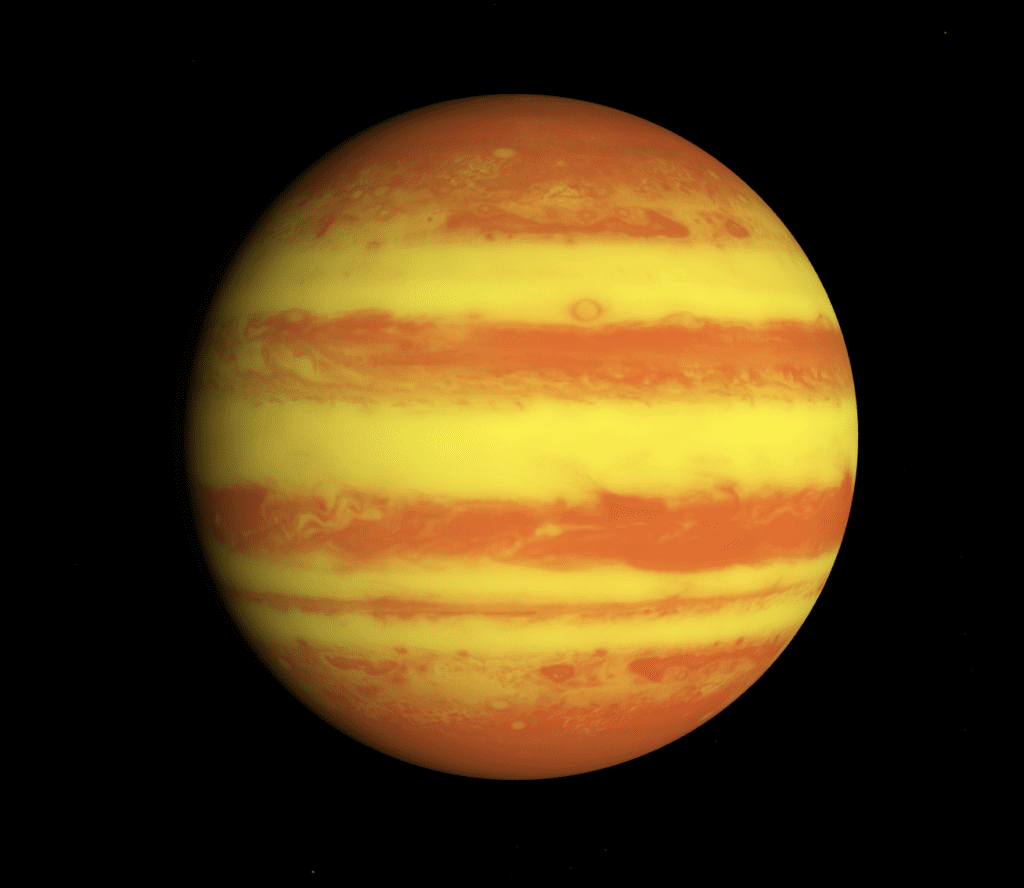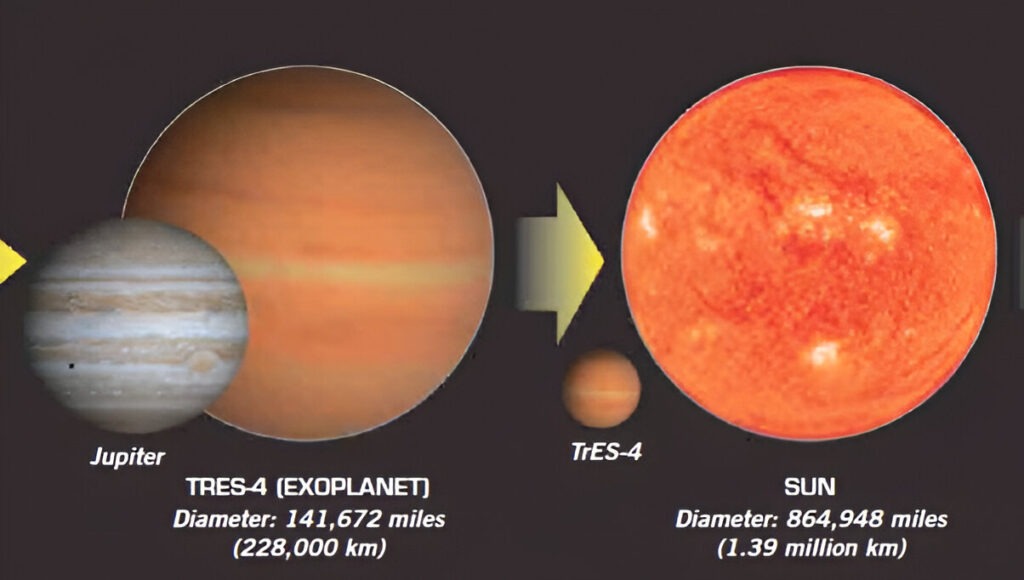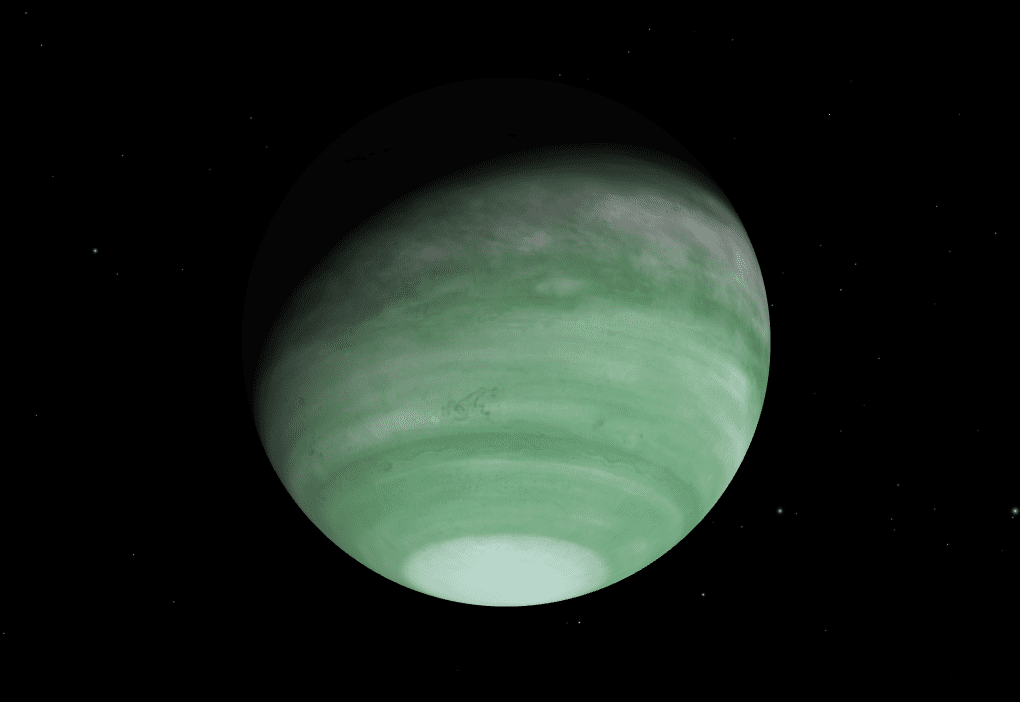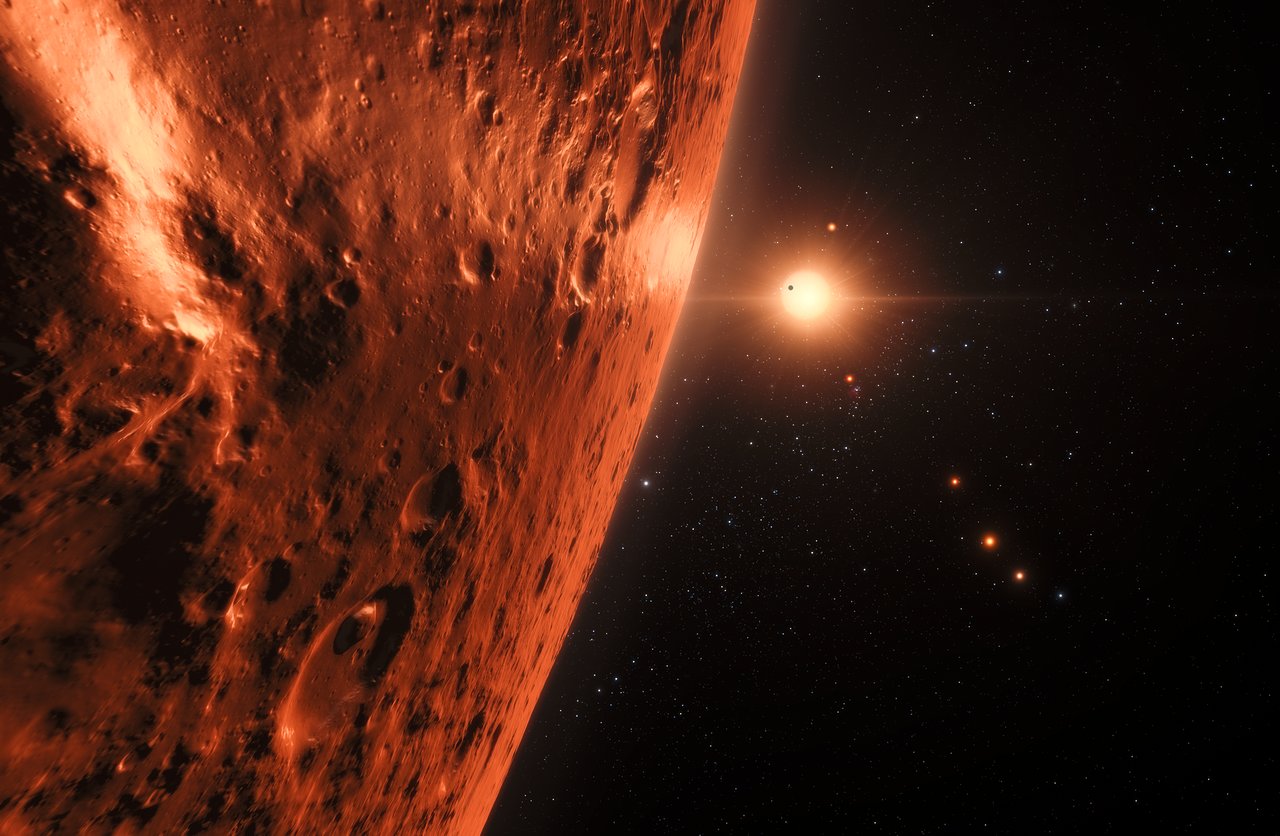TrES-4b is one of the biggest exoplanets in our universe. Any planet beyond our solar system is known as an exoplanet. TrES-4b was discovered in 2007 and has captured the interest of astronomers and the general public alike. In terms of sheer size, TrES-4b compared to Earth, Sun, ROXs highlights a striking difference, with TrES-4b being one of the largest exoplanets discovered, dwarfing Earth but being vastly out-scaled by the Sun.

Table of Contents
Quick and Interesting information about TrES-4b
TrES-4b orbits an F type star (yellow-white stars that can reach 6,000–7,400 K temperature) GSC 02620-00648 and takes 3.55 days to complete an orbit around it. TrES-4b has a mass that is 0.78 times that of Jupiter and a size that is approximately 1.7 times larger. It is located 1,683 light-years away from Earth The planet has extremely low density as compared to its giant size. Scientists note that, given its massive size, the planet should have a much higher mass than it actually does. The planet was discovered by transit technique, where the planet makes the light dimmer of its host star as it passes in front of it allowing scientists to find the size as well.

| PARAMETER | VALUE |
| Radius | 125,735 km (78,145 miles) 1.79 times the radius of Jupiter |
| Volume | 8.33×10^15 cubic km 5.82 times that of Jupiter |
| Mass | 1.48×10^27 kg 0.78 times that of Jupiter |
| Temperature | 1,509 °C (2,748 °F) |
| Gravity | 7.04 m/s² |
| Distance from its Star | 0.047 AU (astronomical units) |
| Orbital Period around its star | 3.55 days |
TrES-4b compared to Earth
TrES-4b compared to Earth is an uninhabitable gas giant primarily composed of hydrogen and helium. Its radius is nearly 20 times that of Earth, and it could fit around 7,700 Earths inside it. Additionally, Earth’s mild climate contrasts sharply with the blistering heat of TrES-4b, where temperatures are estimated to reach around 1,509°C (2,748°F), making the planet inhospitable to life. The distance between the Earth and the Sun is 1 AU (astronomical units) which is around 150 million kms and TrES 4b is located just 0.05 AU from its host star.
TrES-4b Vs Sun

TrES-4b Vs Sun might seem unusual, but it’s interesting to note the relationship between a planet and a star. The radius of the Sun is approximately 5.29 times larger than that of TrES-4b, making the Sun about 170 times bigger in terms of volume.
The Sun is a massive, self-luminous sphere of plasma, undergoing nuclear fusion to produce energy. In contrast, Tres-4b is a gas giant, and while it might appear bright due to reflected light from its star, it generates no energy of its own through fusion.
While our Sun is a G type star (stars having temperatures of 5300K to 6000K and appearing yellow in colour), the host star of TrES-4b is an F- type star. TrES-4b’s close orbit results in it receiving much more radiation and heat from its star than Earth receives from the Sun. This results in a phenomenon called “puffiness,” where the planet’s atmosphere is inflated, making it less dense than expected for a planet of its size.
TrES-4b Vs ROXs 42 B b
ROXs 42Bb is another fascinating exoplanet that differs significantly from Tres-4b. It orbits a young binary star ROXs 42B (M-type star). In the comparison of TrES-4b vs ROXs 42 B b, mass of ROXs 42 B b is estimated to be around 9 times that of Jupiter, significantly greater than Tres-4b’s.

ROXs 42Bb orbits its host star at a significantly greater distance compared to Tres-4b, leading to different atmospheric and environmental conditions. There is significant difference in both of their gravitational pulls on their surface. While TrES 4b has even lower gravity than Earth(9.8 m/s²) which is 7.04 m/s² on the other hand ROXs 42Bb has even greater force than Jupiter (24.79 m/s²) of around 28.8 m/s².
Detailed Table for TrES 4b, Jupiter and ROXs 42 Bb comparison
| Jupiter | TrES-4b | ROXs 42 Bb | |
| Radius | 71,492 km | 125,735 km (1.79 times the radius of Jupiter) | 170,580 km (2.4 times the radius of Jupiter) |
| Volume | 1.43×10^15 cubic km | 8.33×10^15 cubic km (5.82 times that of Jupiter) | 21.6×10^15 cubic km (15 times that of Jupiter) |
| Mass | 1.90×10^27 kilograms | 1.48×10^27 kg (0.78 times that of Jupiter) | 17×10^27 kilograms (9 times that of Jupiter) |
| Temperature | -110 °C (-166 °F) | 1,509 °C (2,748 °F) | 1,725 °C (3140 °F) |
| Gravity | 24.79 m/s² | 7.04 m/s² | 28.8 m/s² |
Tres-4b stands out in the universe of exoplanets due to its unique characteristics, particularly its size and density. Tres-4b compared to Earth is vastly different in size and atmospheric conditions, when discussing Tres-4b vs Sun, the host star is much hotter and more massive, while Tres-4b vs ROXs 42Bb highlights the closer orbit of Tres-4b, leading to distinct environmental effects. As we are discussing about planets and space science, you can read our article on Pluto which will answer the definition of a planet and Pluto’s exceptional case and space stations rivalry between the ISS and Chinese space station.


